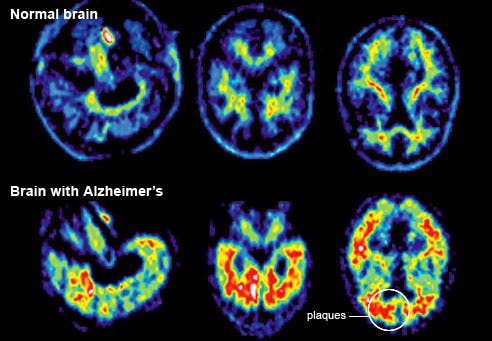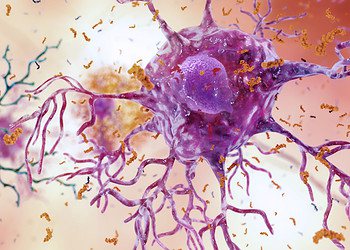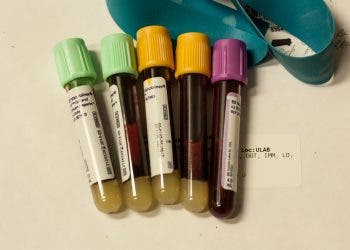Considering population growth and increased life expectancy, experts estimate that by 2050 some 115 million people will be afflicted by Alzheimer’s disease – a prevailing neurodegenerative disease that needs no introduction. There’s no cure to Alzheimer’s, but there are treatments that help mild symptoms or prolong sanity before the point of no return is reached. All of these treatments, however, require diagnosing the disease early on for them to have any lasting effect. Current methods are difficult, expensive and not that reliable.
Neuroscientists at University of California (UC) claim it may be possible to predict with 90% accuracy whether older people will develop the disease over the course of 2 to 3 years simply by looking at a blood sample. If these results can be replicated and the method is found reliable, it could potentially revolutionize the way Alzheimer is being treated today, especially considering there are many voices in the medical field today that call for more drug testing in the disease’s early stage in hope that a cure may actually be found.
A blood test for Alzheimer’s?
The most reliable diagnosis tool for Alzheimer’s involves a brain autopsy. Obviously, it’s as useful as a horse with no legs. Next in the line is extracting fluid from the spinal cord and measuring hallmark protein levels, which is damn painful. Less invasive is running brain scan images in search for the same protein plaques and tangles in brain tissue which mark the disorder. Neither method, except the autopsy, is that reliable though.
In contrast, if found indeed accurate, the sort of blood test the UC researchers perform is extremely simple to do, doesn’t involve any pain or brain slashing, and may prove to be reliable.

The researchers first recruited a couple hundred senior volunteer and collected blood samples, which they then froze and had them shipped to a lab where a mass spectrometer analyzed the blood’s chemical markup to the last molecule. For three years, the progress of the volunteers was followed and 53 people were identified with mild cognitive impairment or Alzheimer’s disease, 18 of whom had not displayed any symptoms at the beginning of the study. Scientists made a comparative analysis of the 53 seniors with Alzheimer’s against 53 other from the same group, chosen at random that were not diagnosed with Alzheimer’s or exhibited any symptoms.
Those who showed mental decline exhibited significant alterations in the blood levels of 10 different chemicals, including fatty molecules called phospholipids, which help keep cell membranes in the brain and body intact. To see how accurate to truth their correlation was, the researchers then chose 41 volunteers at random to see if they could predict if any of them would get Alzheimer’s. Their analysis proved to be 90% accurate of the time.
This sounds like a huge big deal; and frankly, I think it is. Before these results are replicated with larger groups and by other independent research groups, some scientists advise, it’s best not to get our hopes up just yet. Anyone can get Alzheimer’s, really, a fact reflect by the extremely diverse population of patients. It’s possible that the blood tests performed in the present study only catered to a couple of similarities, but on real tests with millions of patients, it’s possible the blood test might become overwhelmed by too many conditions and fail as a reliable diagnosis tool.
Still, the implications of such a simple tool would be immense and could help millions of people ‘waiting’ to be gripped by dementia prolong their sanity and maybe even aid in developing the next line of treatments that might ultimately lead to a cure. Many such studies “have turned out to be a flash in the pan,” says Robert Green, a medical geneticist at Harvard University, but the new study “is more sophisticated than most.”
Findings were published in Nature Medicine.






